#Argentine Mesopotamia
Explore tagged Tumblr posts
Text
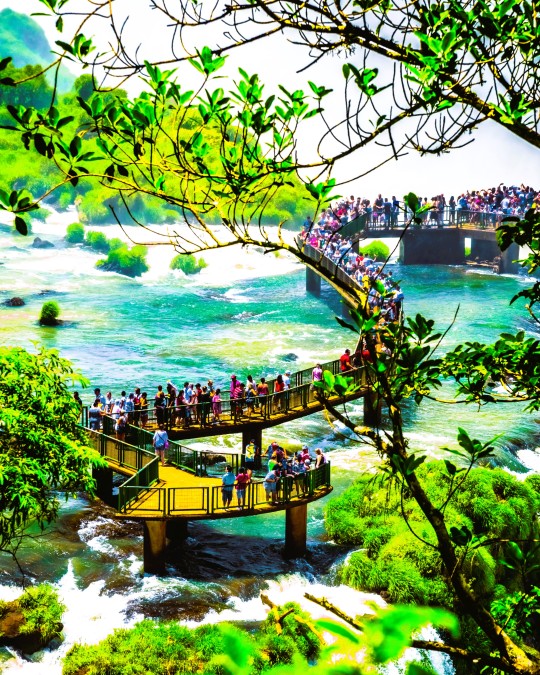
Iguazú National Park, Argentina: The Iguazú National Park is a national park of Argentina, located in the Iguazú Department, in the north of the province of Misiones, Argentine Mesopotamia. It has an area of 677 km2. The area of the park was inhabited 10,000 years ago by the hunter-gatherers of the Eldoradense culture. They were displaced around 1,000 CE by the Guaraní, who brought new agricultural technologies..Wikipedia
#Iguazú National Park#Misiones Province#Argentine Mesopotamia#Argentina#UNESCO World Heritage Site#south america#south american continent
110 notes
·
View notes
Text
"I Want to Explore...History!"
PART I OF THE "I'm Bored" SERIES

Hello everyone! And welcome to part I of the "I'm Bored" series I made in collaboration with @alvaconsumesmedia!
Below you will find a list of different historical content I personally recommend you research and consume if you find yourself bored and wanting to explore the world of history!
If you have any questions about this list, want more information about a person or event than is listed, or wish to make a recommendation as to what should be added, send me a message to my ask box!!

HISTORY TOPICS TO RESEARCH:
[LIST] The Sumerians, Reading Recs.・located in the historical region of southern Mesopotamia, emerging during the Chalcolithic and early Bronze Ages between the sixth and fifth millennium BC were the Sumerians - the oldest recorded civilzation in the entire world....also they invented writing, literature, and beer, so you know they were fun.
The Sedlec Ossuary・also known as the Church of Bones, the Sedlec Ossuary, located in the Czech Republic, is one of the most unusual chapels you will ever see as it is decorated with the real bones of some 40,000 people.
The Great Molasses Flood of 1917・if an inescapable tsunami wave of molasses charging 35 miles per hour toward you seems impossible...you should have been there to see it in Boston in 1919.
The Mouse Utopia Experiments・if you ever wondered what the horrifying real story that inspired The Rats of NIMH was...well you've found it here.
Subtropolis・SubTropolis is a business complex located 150 feet underground in an artificial cave in the bluffs north of the Missouri River in Kansas City, Missouri made out of an old mine that was, at one time, supposed to be an amusement park.
The Dancing Plague of 1518・a plague that hit the town of Strasbourg in 1515 that caused as many as 400 people to dance until they died.
The Demonic Possessions of Loudun・The best-known case of possession in Western European history took place in the French town of Loudun at the Church of Saint Peter where no nun was safe from demon possession.
The Tower of Silence・A dakhma, also known as a Tower of Silence was a structure built by Zoroastrians made to store decomposing dead bodies to keep them away from the city as to avoid contamination of the soil.
The Game of Hounds and Jackals・a popular game played in 1805 by the Egyptians. A copy of the game can be found today in The Met.
The Bloody Bender Murders・in the 1870s the Bender family opened an Inn in Labette County in Kansas and began murdering people who came to visit.
ART HISTORY TOPICS TO RESEARCH:
The "Le génie du mal" and the "L’ange du mal"・the St. Paul Cathédrale de Liège in Belgium, once upon a time, hired two artists both to make statues of the Devil to place in their church and, unfortunately for the nuns of St. Paul Cathédrale de Liège they were done just a little too well.
Albert Kahn's Archive of The Planet・It was Kahn's dream to document the entire world via photography, from 1909 and 1931 his team dispatched to accomplish this goal. However, when the great depression hit his dreams were smashed.
HISTORICAL FIGURES TO RESEARCH:
Carvaggio・Michelangelo Merisi da Caravaggio, known mononymously as Caravaggio, was an Italian painter active in Rome, disliked by many during his time for his arrogance, his rebellious nature...oh yeah, and he was a murderer.
Violet Jessop・Violet Constance Jessop was an Irish-Argentine ocean liner stewardess and nurse in the early 20th century who managed to survive THREE shipwrecks in her time, including the titanic!
Kate Warne・Kate Warne was none other than the first female detective in the United States, who worked for the Pinkerton National Detective Agency - the same agency that inspired many of the original Sherlock novels.
Hatshepsut・Hatshepsut was the Great Royal Wife of Pharaoh Thutmose II and, after his passing, was made the first ever Queen of Egypt...so why has no one ever heard of her?
Ching Shih・Zheng Yi Sao, also known as Shi Xianggu, Shek Yeung and Ching Shih, was the leader of the largest recorded pirate fleat to ever exist from 1801 to 1810 in China...also the pirate queen in the Pirates of the Caribbean movies was based on her...not really important but I think that's pretty cool.
Marie Vigoreaux・Marie Vigoreaux, was a French fortune teller and an active part of the famous Poison Affair of the 1670s.
Olga of Kiev・Olga was a regent of Kievan Rus' for her son Sviatoslav from 945 until 957 who is famously known for taking revenge on entire city by mass murdering them and then, after the deed was done, converted to Catholicism and becoming a patreon saint afterward...and, yes, she is still honored as a saint in Ukraine to this day
Wu Zetian・Wu Zetian, personal name Wu Zhao, was the first and only Empress of China, who ruled from 660 to 705 and she would do anything to ensure that she stayed in charge.
Julie D'Aubigny・Julie d'Aubigny, better known as Mademoiselle Maupin or La Maupin, was a French opera singer....but what's more exciting is that she was a bisexual, cross-dressing, swords-woman, and murderer.
Alexander the Great・Alexander the Great was the king of Macedonia (336–323 bce), who overthrew the Persian empire, carried Macedonian arms to India, and laid the foundations for the Hellenistic world of territorial kingdoms.
HOLLYWOOD HISTORY TO RESEARCH:
The Ava Gardner, Barbara Payton, Lana Turner Love Affair・known as the most scandalous love affair in Hollywood, Gardner, Payton, and Turner were secretly sleeping together for years....and Frank Sinatra was not happy about it.
NONFICTION HISTORICAL BOOKS TO READ:
[LIST] Medieval Religion, Reading Recs.・my list of reading recommendations to help you learn more about religion during the medieval ages.
ARTICLES TO READ:
"What Does God Smell Like?" by John Last・Unusual smells have been a distinguishing mark of holiness since the earliest days of Christian worship, so what is the smell of God?

That's all for history exploration! I hope that this helped you in curing your boredom! if you have any questions regarding anything discussed here or if you'd like to make a request to be added to the list, please send an ask to my ask box! I appreciate all comments and questions!
5 notes
·
View notes
Text
Argentina shares its border with how many countries?

Argentina, a country located in Southern South America is bordered by the Andes Mountains to the west and the South Atlantic Ocean to the east. It also shares a border with five neighbouring countries. Chile lies to the west of Argentina, Bolivia and Paraguay to the north, and Brazil and Uruguay to the northeast.
Argentina is the eighth largest country in the world. It is also the second largest country in South America after Brazil. Argentina is approximately 3,700km long and 1,400km wide, making it about one-third the size of the United States.
The mainland is divided into six geographical parts. From north to south, these are the Argentine Northwest, Gran Chaco, Mesopotamia, Cuyos, the Pampas, and Patagonia. Argentina also owns a few islands in Antarctica, known as Argentine Antarctica.
Climate varies across Argentina. The northern parts experience hot, wet summers and mild, dry winters. Central Argentina also has hot summers but suffers with tornadoes and thunderstorms. The southern regions have warm summers but often receive heavy snowfall in the winter.
0 notes
Text
Argentina
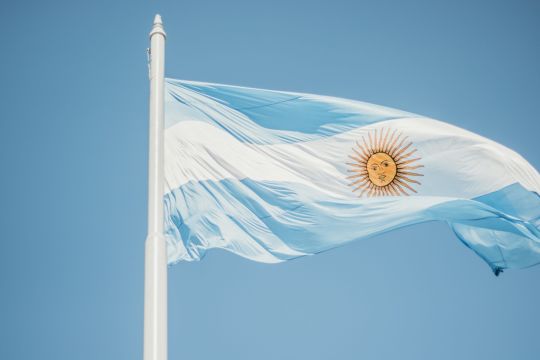
Argentina is the quintessential south. Half of the local realities proudly wear the title "the southernmost. To begin with, there's the world's southernmost railroad: Argentina's answer to the bourgeois Orient Express and the harsh domestic Trans-Siberian Railroad - the Patagonian broad gauge, built, by the way, with a continental scope: about 30 years of work and unprecedented for such distant lands amenities - Fiat Concord cars with different twists, like porcelain sinks and carved chairs, and special trailers to transport cars. Then there's the southernmost city on the planet, Ushuaia, on the promenade by the harbor which is so nice to contemplate the summer apricot sunsets. Finally - the southernmost glaciers on Earth (not counting, of course, the pole), with a constant dry crackle sliding down from the mountains to the crystal "silver" lakes of Lago Argentino. An added bonus: Patagonia, immortalized by Monsieur Verne, known to all of us since childhood, is also located here. In general, "he who is merry - he laughs, he who wants - he will achieve, he who seeks - he will always find!" The capital is Buenos Aires.
Resorts in Argentina

Photo by imprintmytravel on Pixabay Argentina has both sea and ski resorts. Interesting cities in terms of tourism are Salta, Cordoba, El Calafate, and the southernmost city of Ushuaia. Natural attractions are Iguazu, Southern Patagonia and Tierra del Fuego.
Visa to Argentina
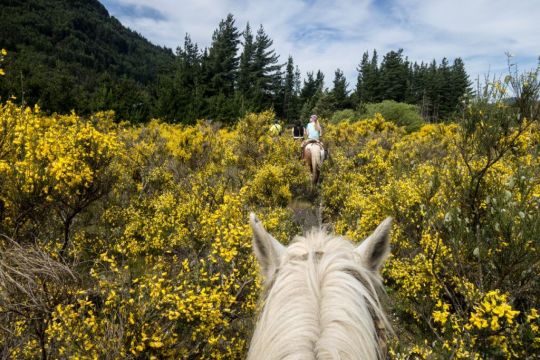
Photo by grebmot on Pixabay A visa is not required to visit Argentina if the trip does not exceed 90 days. Learn more about visa to Argentina. However you will need to obtain a medical insurance for the whole trip in advance. Is it possible to extend your Argentine visa, while you are in the country? Customs Import and export of local and foreign currencies is not limited, but the sums over 10 000 USD need to be declared. You can bring into the country up to 400 cigarettes (or 50 cigars), up to 2 liters of liquor, up to 5 kg of canned foods, souvenirs and gifts not exceeding 300 USD and things for personal needs. When importing these items in excess of this amount, a duty of 50% of their value is levied. It is prohibited to import non-canned food products, items and things of historical, artistic or archaeological value (without a special permit), as well as weapons. When exporting wool and leather goods, jewelry and souvenirs must present a receipt of the store where they were purchased. When exporting furs, an export stamp receipt will be required.
A little history
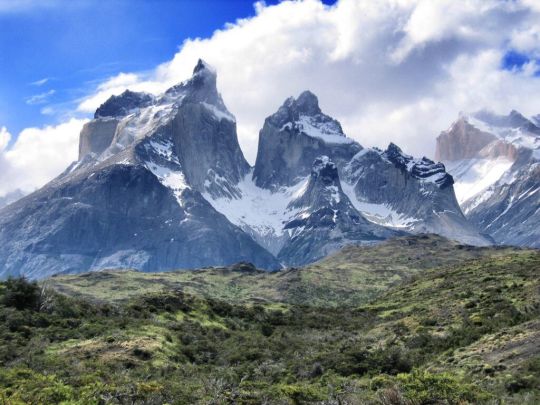
Photo by jstarj on Pixabay Incredible, but true: in the early 20th century Argentina was considered perhaps the richest country in the world. There was even a saying: "As rich as an Argentinean". Thousands of Europeans tried to find prosperity in the picturesque foothills of the Andes - Southern Italians, Basques who moved from the Pyrenees, Galicians and Catalans, Germans and Austrians and Swiss, Irish and Scots, Russians, Ukrainians and Jews. Despite the government's best efforts to repopulate Argentina's empty territories, they did not succeed, as most immigrants eventually settled in or around the capital. Patagonian Indians were exterminated almost to the last, Africans did not survive the wars with Brazil and Paraguay. Thus a "white" country emerged in South America, Catholic in spirit, Spanish in way of thinking, and French in way of life.
Transport in Argentina
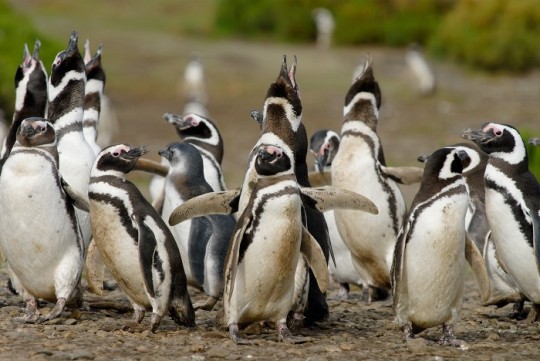
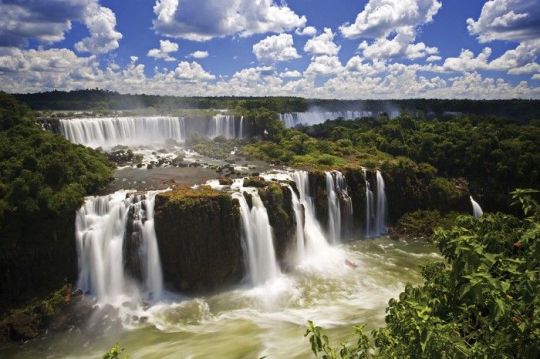
Long distances in the country are most convenient and fastest to travel by plane due to the extensive network of airways and the presence of airports in major cities. It is better to book tickets in advance, and you should also keep in mind that there are flight delays. Rail transport in the country is popular, but in some areas is not well developed. Special tourist trains run in the Patagonia and Mesopotamia regions, and urban transport is represented by buses, commuter trains and cabs. Buenos Aires also has a subway. In 1906, the newly elected president of Argentina raised the question of the development of the national territories: thus began the era of the Patagonian Railroad. But only a couple of decades later the operating line finally connected the major center of Bahia Blanca and the southern tip of Buenos Aires province, the city of Carmen de Patagonese, across the river from which lies Viedma, the capital of the neighboring province and the door to Patagonia… International bus routes connect Argentina with neighboring countries: Chile, Bolivia, Uruguay, Paraguay, and Brazil. From Jujuy and Salta there are buses to La Chiaqua, from where you can cross the Bolivian border on foot or by cab. From the same cities you can go to the Bolivian town of Jacuibo, located right on the border, where buses go to the Bolivian department of Santa Cruz. With Chilean cities Argentina is connected by routes from Salta to San Pedro de Atacama, from Mendoza to Santiago, from Bariloche to Puerto Montt, from Ushuaia to Punta Arenas. All cabs in Argentina are equipped with meters, which must be turned on when the passenger boards.
Safety in Argentina
Because there are few "Russo tourists" in the country, locals consider them exotic and the attitude is friendly and helpful. However, certain security measures do not cancel it: it is not recommended to leave the tourist centers alone (especially in the evening), you should not carry large sums of money, expensive jewelry and so on. It is recommended to drink bottled or boiled water. Swimming in the ocean can only be strictly in designated areas: in unequipped areas it is dangerous because of the strong coastal currents.
Interesting facts
The "silver country" has a lot to show the world: tango, Evita Perón, soccer and the most beautiful woman president - just the beginning of the list. Argentina offers, in record time, some of the most bizarre experiences the opposite hemisphere has to offer: a glacier that never stops murmuring, a wander through the streets of the southernmost city, a tango lesson in the street (and if you are lucky, even a milonger standing ovation!), a sail to the legendary Cape Horn, or even an Antarctic cruise. With no visa formalities, to get from winter Russia right into the Argentine summer, all you need is spare time and a fair amount of money. Argentina is known as one of the world's leading wine producers, but adherents of tequila, whiskey, vodka or brandy are also not lacking in their favorite beverages.
Climate of Argentina
Argentina's climate is subtropical in the north, humid tropical in the center, and temperate in the south. Don't forget that in the southern hemisphere winter and summer coincide with ours in exactly the opposite way. The Andean region is characterized by rainy weather and frequent flooding in the summer season, intense heat in the summer, snow cover in the mountains in the winter, and frequent dry hot winds, which Argentinians call "zonda". The temperature variations are considerable both between the seasons and within a single day. In the plains, it often rains heavily over impenetrable rainforests and savannahs. The average temperature is +5 ° C in January and +20 to +22 ° C in July. Summer (December to February) is the best time to visit Patagonia and the Southern Andes. Winter (May through September) is the best time to travel through the northern and northwestern parts of the country. Spring and autumn are the perfect time to visit Buenos Aires, the Inter-Mediterranean region and the Cordillera foothills of La Rioja and Catamarca. And fans of skiing can hone their skills on the slopes of snow-capped Argentine Andes from June to October. The best time to visit the country - from October to May. Up-to-date information: weather forecast for the main resorts in Argentina in the coming days. Hotels in Argentina There are two types of hotels in Argentina - local and international "chains". The first are usually inclined to attribute an extra star to themselves undeservedly, while the level of the latter fully comply with the declared. There are few all-inclusive hotels in the country; in general the hotels offer either breakfasts or half board. The mains voltage is 220 V, 50 Hz. There are two-pin plugs and three-pin plugs. You are advised to bring your own plugs. Tango in Argentina
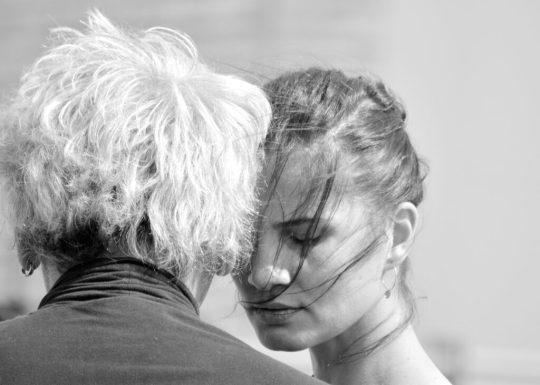
Photo by fsHH on Pixabay Perhaps everyone knows about the Argentine origin of the tango. Of the fact that it has long been considered, say, not too decent even in their own homeland, probably, are well aware of many (it is known that the champions of strict morality considered tango as a prelude to sex, rather than a dance). But one funny nuance, directly connected with the above-mentioned point, remained almost unknown. It turns out that when the tango began to gain popularity among male audience, its first fans faced with a severe shortage of partners during the training: decent girls in any way did not want to do "it", and dancing lessons in brothels were too expensive. However, they found a way out: men simply began to learn tango dancing… with each other! By the way, according to some researchers, this is what gave a strong impetus to the development of dance and enriched it with new movements.
Banks and exchange offices
The currency unit of the country is the Argentinean peso (ARS). 1 peso has 100 centavos. The current exchange rate: 1 ARS = 0.76 RUB (1 USD = 95.77 ARS, 1 EUR = 113.64 ARS). Currency can be exchanged in all banks and large shopping centers, hotels and specialized exchange offices. American Express, Visa, Master Card and Eurocard are accepted at major stores, hotels and restaurants. But in the provinces it is almost impossible to pay with them. You should not take traveler's checks with you. Exchange offices charge high commission for cashing them out, besides, it is almost impossible to exchange them in small towns. Most banks and exchange offices use a ticketing system - instead of standing in line a visitor receives a ticket with a number and then waits until the number is called by a clerk. It must be said that this procedure is more time-consuming than the usual live line.
Shopping and Shops in Argentina
In Argentina, inexpensive and high-quality shopping. From the country you can bring knives, silver mouthpieces, mate tea with a set for its preparation and use (calebasse and metal tubes), sheepskin products, clothing made from vicuña wool, Argentine wines, guitars, art, and quite good furs. When exporting wool and leather goods, you must present a receipt from the store where they were purchased. When leaving the country, you can reclaim VAT on purchases over $70 USD. In Ushuaia, in the free trade zone, purchases will be particularly advantageous. https://vimeo.com/122515337
Cuisine and restaurants
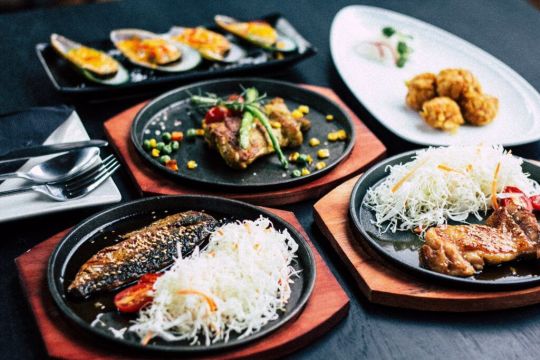
Photo by Mgg Vitchakorn on Unsplash To start with a little advice: forget about fish restaurants in Argentina. It's almost impossible to find them there, and even if you do, you'll regret it. Argentina is meat! One of the best in the world. And wine. Argentine chefs are known for their masterful handling of beef. In addition, after a trip to the country's restaurants, a tourist may well have the impression that he or she has visited almost all of South America - so fond are the local chefs to "borrow" recipes from their neighbors on the continent. The same is true for alcoholic beverages. Argentina is known as one of the world's leading wine producers, but fans of tequila, whiskey, vodka, or brandy are never short of their favourite drinks. Well, the leisure of ideological or unintentional opponents of alcohol will be brightened up by genuine mate in authentic calabas, traditionally drunk through a silver tube. Tipping in Argentina amounts to 5-10% of the bill for service; in expensive establishments it is often already included in the bill. If you decide to treat yourself to a famous restaurant, especially on a weekend, be sure to reserve a table in advance. Otherwise you'll have to stand in a decent line at the entrance. All restaurants on the Atlantic coast prepare excellent dishes of seafood. The "specialty" of Argentina are the "empanadas" pastries, which are considered a Spanish contribution to local cooking. Argentinians have a late dinner, at 9 p.m. at the earliest. Until then, most restaurants serve only light snacks such as pizzas and sandwiches: the "big kitchen" doesn't start until after dark.
Wines of Argentina

Photo by Maja Petric on Unsplash Wine in Argentina is very decent. The local culture of viticulture and winemaking is a kind of symbiosis of European traditions. Even the grape varieties that are grown here seem to have been selected according to the principle "the best from each country. From France - Cabernet Sauvignon, Merlot and Chardonnay, from Italy - Sangiovese and Bonarda, from Spain - Cempranillo, from Germany - Riesling. Any wine from 200 ARS and up will be very decent. "Top five": Cheval des Andes 2002 (Terrazas de los Andes), Vistalba Corte A 2004 (Finca y Bodega Vistabla), Iscay 2002 (Trapiche), Luigi Bosca DOC 2003 (Luigi Bosca), Antalogia VIII 2000 (La Rural).
Mate
The Argentines say that yerba mate, the drink number one in all of Latin America, was bestowed upon humanity by the gods who had mercy on mankind. According to the legend, two goddesses came down from heaven to take a walk on the pampas, to gaze at the glaciers, to bathe in the crystal waters of Lago Argentino… In general, everything is like today's tourists. No sooner had the celestials set foot on the "silver" land, than a jaguar appeared out of nowhere, and it was just dinnertime. The ladies were frightened out of their wits - but then an Indian appeared from behind the bushes and drove the bloodthirsty beast away like a real gentleman. In gratitude, the goddesses gave the Indian a calebasse and leaves of an unknown plant and taught him to make a decoction from them, which helps to relieve fatigue, improve health, and generally find all kinds of happiness. Since then, yerba mate has been consumed here on an astronomical scale, and Argentinians, as a consequence, are invariably awake and cheerful.
Active recreation or what to do in Argentina
What to do in Argentina: In Buenos Aires - see numerous generals on horseback, in the stone, bow to Eva Perón, drink mate, take part in a gaucho show, visit a tango show, dance a tango in La Boca and feel free from everything - a real gaucho, see how pre-Hispanic cultures live among stunning landscapes. The obligatory trekking in the National Park of Glaciers and Iguazu Falls, rafting and kayaking in the mountain rivers of Bariloche, Salta and Mendoza; mountain climbing and ascent of Mount Aconcagua; canopying, paragliding, skiing, riding in the salt deserts in the highlands are just some of the options that Argentina has to offer. You can ride horses across the snow-capped Andes, swim alongside seals and whales, walk between penguins in Patagonia, watch birds in the "American Serengeti" or condors in the high Andes, meet animals like llamas, vicuñas, capybara, nyandu, mara-anything to make it a major destination for those with any interest in nature. People come here for the exotic, the great fishing and the special, inherent only in Latin American countries, feeling of a continuous holiday. Read the full article
0 notes
Text
There is a scout on WhatsApp | River selected …
In an exhibition of pragmatism before the limitations imposed by the pandemic crisis, River made a virtual call of players for their lower divisions through WhatsApp by not being able to organize the usual face-to-face fundraising.
The management of the Núñez club Infant Youth Project received some 2,600 videos and, after processing all the information, chose 20 footballers of different ages who will be contacted personally in the coming days to advance with the administrative procedures of their transfer.
As they explained from the millionaire training area to the Télam agency, each applicant to enter the minor divisions had to send videos and basic information on their CV, which was previously filtered by each of the recruiters and then sent to the central office for the final selection.
While in terms of location, the club enabled different telephone numbers by region and centralized the material for Patagonia, Córdoba, Santa Fé, Cuyo, Norte, Mesopotamia, Interior of Buenos Aires, Conurbano and Ciudad Autónoma de Buenos Aires.
After considering the initiative in a positive way, River plans to project it abroad, with Colombia as the next stop. Although in these cases, for regulatory reasons, it will be intended only for boys from categories 2002 to 2004, aged 14 to 16 years.
Saviola and Pezzella, connected
On the other hand, the soccer player of the Argentine national team Germán Pezzella and former striker Javier Saviola, both from the River youth team, will offer next week a virtual talk to the almost 400 boys from the bottom of the millionaire club, which will mark the beginning of a motivational cycle while the quarantine lasts for the health emergency.
Saviola, 38, retired from professional activity in 2016, was the first to accept the club's proposal and will be online next Monday at 2pm from Andorra, where he lives and prepares to be a coach of training divisions.
Two days later, it will be the turn of Pezzella, current defender and captain of Fiorentina, who contracted the coronavirus in Italy and is already fully recovered.
Both Saviola and Pezzella, 28, will transmit their experience in the inferiors of the Núñez club, from which they came to debut in the major division: the first in 1998, at just 16 years old, by Ramón Díaz from La Rioja and the second in 2011, at 20 years old and Matías Almeyda as technical director.
“The idea is to accompany the boys, encourage them and set examples of perseverance and professionalism with players who have passed all those stages that our kids from the different infant-youth categories are going through,” they explained from the Club's Lower Divisions Department, also focusing on teaching preventive and hygienic behaviors in the face of the pandemic.
The post There is a scout on WhatsApp | River selected … appeared first on Cryptodictation.
from WordPress https://cryptodictation.com/2020/04/18/there-is-a-scout-on-whatsapp-river-selected/
0 notes
Photo

New Post has been published on https://travelonlinetips.com/10-reasons-why-west-philadelphia-is-the-coolest-neighborhood-2/
10 reasons why West Philadelphia is the coolest neighborhood
Most people know about West Philadelphia from the show The Fresh Prince of Bel-Air. The famous theme song intro put West Philly on the map and since 1990, the neighborhood has been enshrouded in a Will Smith mystique. But there’s more to West Philadelphia than just that one verse.
Philadelphia is known for being a city comprised of diverse neighborhoods that were once independent towns. Over a few centuries, these towns were engulfed as the city expanded.
Once you cross the Schuylkill River along Center City’s western banks, West Philadelphia is a city on its own filled with Victorian mansions, an intricate network of trollies, an artist scene, and vibrant immigrant communities unlike any other section of Philadelphia.
If you come to Philadelphia and don’t go to West Philly, here’s only the tip of the iceberg of what you’d be missing.
1. Victorian architecture along Baltimore Avenue
Colorful Victorian mansions line Baltimore Avenue — Photo courtesy of Kae Lani
Residential development in West Philadelphia began around 1850, after bridges and streetcars allowed the city to expand over the Schuylkill River. Since much of West Philadelphia was rural, and because the city had a growing population of middle and upper-class residents, there was a high demand for real estate – specifically elaborately designed homes.
When they were built, these ornate Victorian homes were among the most expensive homes in America. Over 150 years later, many of the mansions around West Philadelphia’s Baltimore Avenue remain, and many have been repainted in vibrant colors which capture the quirky persona of the neighborhood today.
2. University City
Inside the Egypt Gallery of the Penn Museum — Photo courtesy of Penn Museum
West Philadelphia is also home to University City, an area where the campuses of Drexel and the University of Pennsylvania collide. With two of the nation’s largest educational institutions, University City is a leader in medical research, technological innovation and cultural exploration.
Visitors can spend time at the Penn Museum, one of the world’s best archaeological museums which houses rare artifacts from Egypt, Asia, Mesopotamia and the Americas. For a more modern experience, visitors can explore the Institute of Contemporary Art with galleries that display the most provocative art of the day. In West Philadelphia, you don’t have to be a student to learn something new.
3. Clark Park
Pick up a quick game of Pétanque in Clark Park — Photo courtesy of Kae Lani
Just past University City along Baltimore Avenue is Clark Park, a popular meeting and events space for residents and visitors. On weekends, it’s common to find farmers markets, groups practicing circus acts like hula-hooping and fire twirling, and people playing Pétanque, a French game similar to bocce ball.
During the summer in “the Bowl,” a natural outdoor amphitheater, you can catch a free Shakespeare play put on every year since 2005 by local theatre company, Shakespeare in Clark Park.
4. Jezabel’s Studio
Learn to make a variety of Argentine empanadas at Jezabel’s Studio in West Philadelphia — Photo courtesy of Kae Lani
Jezabel’s Studio is a space that’s as creative as its owner, Jezabel Careaga. Her West Philly studio is not just a tea house that serves Argentine delights, but also a classroom where visitors can learn how to make Argentine staples.
Visitors can be taught to make anything from tortilla de patatas and empanadas to torta de ricotta and alfajores. And it’s all set in a space that was renovated and designed by Jezabel herself. She even learned woodworking so she could make furniture for the studio!
5. International cuisine
Kilimandjaro is a West African eatery serving delicious meals with a Senegalese influence — Photo courtesy of M. Fischetti for VISIT PHILADELPHIA®
If you’re a foodie on the hunt to experience a wide array of international cuisines, then you will love West Philadelphia. You’ll find not just foods that represent countries, but dishes that express the nuances of specific regions, prepared by individuals that hail from those communities.
If you’re searching for an African restaurant, Kilimandjaro serves Senegalese-style stews with a touch of French flavor. At Dahlak, Ethiopian cuisine is paired with open mic nights and karaoke. If you’re in the mood for Middle Eastern, you can start with a kufta sandwich at Makkah Market and treat yourself to Lebanese flatbreads and baklava at Manakeesh.
Break away from the usual Pad Thai takeout by sampling Laotian specialties like laab and pun paa at Vientiane Café. For the adventurous eaters, if you plan your trip accordingly, Vientiane Café also hosts an “Adventurous Eats” series where you might get a chance to sample steamed fertilized duck eggs, river snails or a silkworm omelet. You don’t have to buy a plane ticket to taste the cuisine of far away places.
6. Fairmount Park
Set amongst the forest, the Shofuso Japanese House and Garden gives visitors a serene getaway. — Photo courtesy of Shofuso Japanese House and Garden
West Philadelphia has a lot of green space. It boasts Philadelphia’s largest park, which happens to be one of the largest urban parks in the country: Fairmount Park. There’s over 2,000 acres of fields, forests, hiking trails, lakes, creeks and riverside views.
Fairmount Park is also home to the Shofuso Japanese House and Garden, which has a koi pond, tea house, and a tiered waterfall. In addition, you’ll find the Fairmount Park Horticultural Center and the historic Boathouse Row, as well as many other centers dedicated to environmental and cultural conservation.
7. Philadelphia Zoo
Big Cat Crossing gives the Zoo’s large felines more room to roam — Photo courtesy of The Philadelphia Zoo
The Philadelphia Zoo may be America’s first zoo, but it is far from old and outdated. It’s home to around 1,300 animals, many that are rare and endangered, who live in a 42-acre Victorian-style garden. Above the zoo is the Treetop Trail, an elevated mesh-net trail for monkeys and lemurs that connects several habitats.
Big Cat Crossing is another overhead passageway that allows the Zoo’s big cats – lions, tigers, pumas, jaguars and other large felines – to navigate to other areas of the park. Both features are part of the Philadelphia Zoo’s revolutionary Zoo360 program which gives these animals more space to roam than many other zoos.
8. Bartram’s Garden
Discover the secret life of plants at Bartram’s Garden — Photo courtesy of Bartram’s Garden
Home to an early American botanist, John Bartram, Bartram’s Garden is the oldest surviving botanical garden in North America. Bartram dedicated most of his life to exploring North America and collecting and cataloguing new species of plants he found.
Many of the plants he encountered were brought back to his farm where people still visit to learn about different plant species and to enjoy the serenity of the garden.
9. The Mann Center
Music lovers immerse themselves in the outdoor concert experience at The Mann Center — Photo courtesy of The Mann Center
Located within Fairmount Park is the Mann Center, an outdoor amphitheater that has served as the summertime home of the Philadelphia Orchestra since the 1930s. The venue seats over 4,500 people, but has the capacity to hold nearly 13,000 if you count the lawn seating.
Every summer, the Mann Center hosts a variety of outdoor concerts ranging from symphony orchestras to indie rock bands.
10. The bar scene
Try beers from around the world at Local 44’s bottle bar — Photo courtesy of Kae Lani
Every great day of exploring deserves a fresh cold beer. Luckily, there is no shortage of excellent bars in West Philadelphia. Just off the University of Pennsylvania’s campus is Local 44, a neighborhood gastropub that not only has excellent local beers on tap, but also has a bottle bar next door with a wide variety of beers and ciders from around the world.
Further down Baltimore Avenue you’ll find Dock Street Brewery, Philadelphia’s first microbrewery that pairs their fresh brews with wood-fired pizzas. But if you’re in the mood for a cocktail bar that is as eccentric as West Philly itself, head to Fiume. It’s a hidden speakeasy located above Abyssinia, an Ethiopian restaurant that will bring your “wat” and “tibs” up to you while you enjoy one of Philadelphia’s best Manhattans.
var gci_10b = ; gci_10b.content_type="Article";
var googletag = googletag || ; googletag.cmd = googletag.cmd || []; (function() var gads = document.createElement('script'); gads.async = true; gads.type = 'text/javascript'; var useSSL = 'https:' == document.location.protocol; gads.src = (useSSL ? 'https:' : 'http:') + '//www.googletagservices.com/tag/js/gpt.js'; var node = document.getElementsByTagName('script')[0]; node.parentNode.insertBefore(gads, node); )();
window.fbAsyncInit = function() FB.init( appId : '213816218687991', xfbml : true, version : 'v2.0' ); ;
(function(d, s, id) var js, fjs = d.getElementsByTagName(s)[0]; if (d.getElementById(id)) return; js = d.createElement(s); js.id = id; js.src = "http://connect.facebook.net/en_US/sdk.js"; fjs.parentNode.insertBefore(js, fjs); (document, 'script', 'facebook-jssdk'));
$(document).ready(function()
$(".slidingDiv").hide(); $(".show_hide").show();
$('.show_hide').click(function() $(".slidingDiv").slideToggle(); );
);
$(window).scroll(function() var scroll_top = $(this).scrollTop(); // get scroll position top var height_element_parent = $(".vert-social-sharing-bar").parent().outerHeight(); //get high parent element var height_element = $(".vert-social-sharing-bar").height(); //get high of elemeneto var position_fixed_max = height_element_parent - height_element; // get the maximum position of the elemen var position_fixed = scroll_top scroll_top ? 0 : position_fixed_max - scroll_top ; $(".vert-social-sharing-bar").css("top",position_fixed); );
/* ----- Begin Step 1 ----- */ //Load the APS JavaScript Library !function(a9,a,p,s,t,A,g)if(a[a9])return;function q(c,r)a[a9]._Q.push([c,r])a[a9]=init:function() q("i",arguments),fetchBids:function()q("f",arguments),setDisplayBids:function() ,targetingKeys:function()return[],_Q:[];A=p.createElement(s);A .async=!0;A.src=t;g=p.getElementsByTagName(s)[0];g.parentNode.insertBefore(A,g) ("apstag",window,document,"script","//c.amazon-adsystem.com/aax2/apstag.js"); //Initialize the Library apstag.init( pubID: '3090', adServer: 'googletag' ); /* ----- End Step 1 ----- */
$(function() $(".th-slide").jCarouselLite( btnNext: ".next", btnPrev: ".prev", scroll: 1, circular: false ); );
$(document).ready(function()
$(".scrollToTop").hide();
//Check to see if the window is top if not then display button $(window).scroll(function() if ($(this).scrollTop() > 100) $('.scrollToTop').fadeIn(); else $('.scrollToTop').fadeOut(); );
//Click event to scroll to top $('.scrollToTop').click(function() $('html, body').animate(scrollTop : 0,800); return false; );
);
Source link
1 note
·
View note
Text
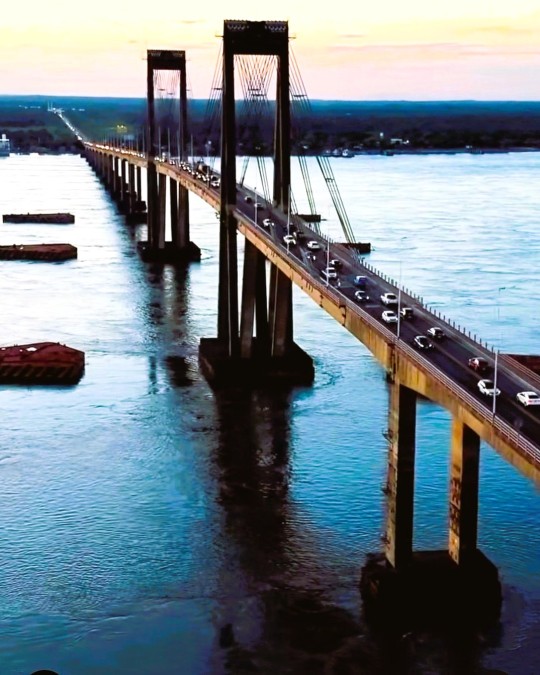
General Belgrano Bridge, Argentina: The General Manuel Belgrano Bridge (Spanish: Puente General Manuel Belgrano) is a road bridge that joins the Argentine cities of Corrientes (capital of the Corrientes Province in the Mesopotamia) and Resistencia (capital of Chaco in the Chaco Region) over the course of the Paraná River (near the confluence with the Paraguay River). It was opened on May 10, 1973. Wikipedia
125 notes
·
View notes
Text

Iguazú National Park, Argentina: The Iguazú National Park is a national park of Argentina, located in the Iguazú Department, in the north of the province of Misiones, Argentine Mesopotamia. It has an area of 677 km2. The area of the park was inhabited 10,000 years ago by the hunter-gatherers of the Eldoradense culture. They were displaced around 1,000 CE by the Guaraní, who brought new agricultural technologies. Wikipedia
#Iguazú National Park#Argentina#Iguazú Department#Misiones Province#south america#south american continent
99 notes
·
View notes